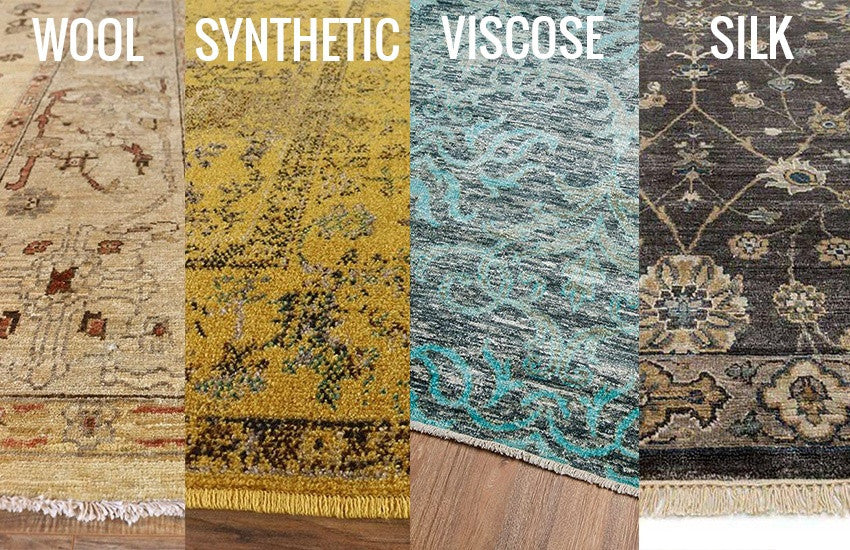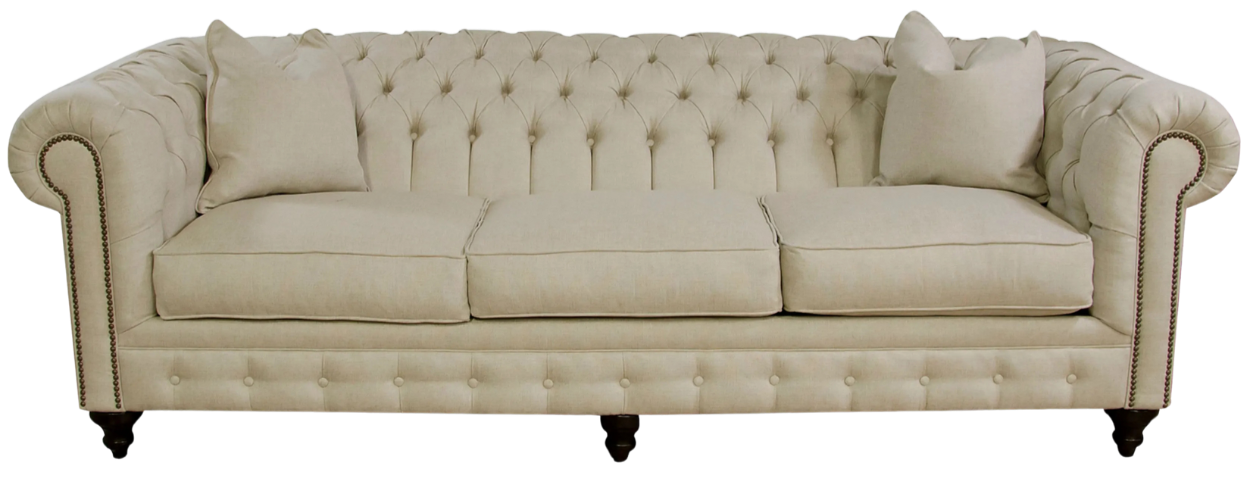Your Cart is Empty
RUGS
FURNITURE
Hand-Knotted, Hand-Tufted, and Machine-Made Rugs: Do the Differences Matter?

One common question we get at NW Rugs & Furniture is, “What is the difference between hand-knotted, hand-tufted, and machine-made rugs?” The conversation usually addresses the differences in quality, durability, and price between the three. We believe you have a right to know exactly what you’re getting when you invest in a rug, so let's break it down.
In this article about how rugs are made, we described common types of rugs and their construction. If you haven’t read it already, I recommend you take a moment to do so before going further on this post. It's a great starting place to garner a better understanding of how each of the different rug types is crafted and knowing the work involved in rug-making will give you a good introduction to the topics here.
Once you become familiar with the different styles of rugs and how they're actually made, you'll be able to see exactly how these differences can influence your buying decision.
First, Let's Clarify Something
When you start reading words like hand-knotted and hand-tufted on our website, it's easy to assume that because they are both 'handmade' rugs that they're essentially the same. I’m here to tell you -- they’re absolutely not the same. There are several major differences you need to know.
Hand-knotted rugs are constructed by artisans, completely by hand, using only individual strands of wool, silk, or cotton, and tying them in individual knots. They can take up to an entire year to complete, depending on the design, size, and skill of the weaver. These truly are ‘handmade’ rugs.
Hand-tufted rugs are made by using a tufting gun to trace a design onto a canvas. The entire process can take as little as a day to complete, and creates a texture of tiny loops rather than knots.
When you shop for a rug, you may have some trouble distinguishing between a hand-knotted and hand-tufted rug. A few telltale signs to look for include:
Next, Let's Talk Distinguishing Characteristics
1. Differences in Material
The first major difference that you’ll find between the three types of rugs is material. Fiber material can be a factor in not only determining price and durability but also in matching your lifestyle and design preferences. A rug made of 100% wool might be more expensive than a synthetic alternative, for example. It’s important that you understand what materials you’ll most likely have to work with when you buy one of these types of rugs.

Texture of a rug relates more to the material used than the weaving technique, and there are some slight variations you can detect among these three rug types. In general, hand-knotted and hand-tufted rugs tend to be thicker and coarser to the touch. If you squeeze the front and back of the rug, both types should offer a fairly high degree of resistance to compression.
Conversely, machine-made rugs are universally smooth, especially when made using synthetic fibers. When you squeeze a machine-made rug, the fibers should compress very easily.
2. Differences in Appearance
While there are some subtle differences in overall appearance between the three types of rugs, all of them have the potential to perfectly complement any home design. Our designers, Amber Lewis and Magnolia Home, utilize all three techniques to create their sensational rug lines. Most of the visual differences will only matter to you if you’re an ardent rug collector, or if you're particular about straight edges and/or have a preference for fringe. For the purpose of making your home beautiful, any of these rug styles will work wonderfully.
3. Differences in Durability
This is where we really start to see the three different rugs distinguish themselves from each other. Regardless of the material used to make the rug, there’s going to be a clear distinction in how well these rugs hold up over time, especially in high-traffic areas. Keep in mind, though, that the amount of time your rug holds up also depends largely on how well you care for it.
When you’re trying to gauge the durability of a rug, start with the knot density. Knot density refers to how many knots you’ll find in one square inch. We call this KPI. Looking at the back of the rug, you can get an idea of the KPI by counting each knot, which will look like tiny pixels on an image. The count can vary greatly, but in general, you want a rug with at least 90 to 100 knots per square inch, depending on the material. Counting it yourself could take a long time, so ask one of our experts at the showroom for information before you make your purchase.
4. Differences in Cost
While the quality factor is the biggest difference between hand-knotted, hand-tufted, and machine-made rugs, they are also distinguished by price. Rugs are like any other major purchase - the higher the cost, the higher the quality you’re likely to find. At NW Rugs, we stand behind the quality of each of our rugs. No matter which type of rug you choose, know that you're making a sound investment because the right rug can give your space the comfort, elegance, and beauty your home deserves. With that being said, your budget is going to play a key role in determining which type of rug works best for you. In addition to weaving technique, the rug size and fiber composition will also factor in to the price point.
Hand-Knotted Rugs
-
Materials: Craftsmen use natural materials like cotton, silk, wool, jute, and even bamboo to produce hand-knotted rugs. By far, wool is the most popular material used in making hand-knotted rugs. Though it’s uncommon, some artisans choose to combine different materials into a single hand-knotted rug, to add sheen or some other sort of textural effect.
-
Appearance: Hand-knotted rugs have, by far, the most ‘handmade’ and organic appearance. These rugs also contain tiny imperfections that tell you they were made completely from scratch. These might include slight variations throughout the design or different knot sizes on the fringe. You may notice that the border isn't perfectly straight, or that there's a slight curve to the rug. These imperfections are marks of the unique quality that only handmade craftsmanship can produce, and that's why we refer to hand-knotted rugs as 'one-of-a-kind' pieces.
You can spot a hand-knotted rug by looking at the back of the rug to identify the knots, as mentioned above under durability. The individual knots will look like tiny pixels, and the rug design will be just as clear on the back as it is on the top. Hand-knotted rugs also have fringe. As you read in the Rug Types post, fringe is the foundational structure of the rug, so it's a clear identifier that a rug is hand-knotted. Some contemporary rugs have the fringe stitched back under the rug, for a modern, fringe-less look, but you'll be able to recognize that by a panel that is stitched over top.
-
Durability: Hand-knotted rugs are far and away the most durable rugs you can get. At the hands of a master craftsman, a hand-knotted rug has the potential to last for centuries. The properties of wool are the most durable of all the rug fibers, plus the lanolin naturally produced by sheep makes them more resistant to stains.
-
Cost: Because of their remarkable durability, and the fact that no two are exactly alike, hand-knotted rugs cost the most by far. Since they can be considered works of art, they are often highly sought-after by collectors and their may increase if the rug is rare. Hand-knotted rugs typically range anywhere from $1,000 up to $25,000+, however, they can go much higher. The most expensive rug purchase ever made was for a 17th century, hand-knotted Persian rug that was sold by Sotheby’s of New York for $33.7 million in 2013.
These rugs retain their value not just to collectors, but in the vintage market as well. With so much life left in them, even after a decade of use in a home, there's resale opportunities for a rug that isn't being passed down. So while the investment might feel like a lot, in the long run you're saving money by not needing to replace the rug if it gets stained or worn after a few years, and potentially earning some money back should you choose to rehome the rug when your style changes.
Hand-Tufted Rugs
-
Materials: Hand-tufted rugs also make heavy use of natural materials, particularly wool. However, since hand-tufted rugs are far less labor-intensive than hand-knotted rugs, artisans are more willing to use different fabrics to construct the rug.
-
Appearance: In many cases, hand-tufted rugs are all but indistinguishable from their hand-knotted cousins when seen from the front, though there aren’t as many imperfections. As I mentioned above, you often have to check the back of the rug and the fringe to catch the difference.
-
Durability: Hand-tufted rugs are admittedly some of the least durable rugs available. However, that doesn’t mean they can’t hold up well. If you maintain a hand-tufted rug well, it can last for at least 10 years, and potentially up to 20 years.
- Cost: The price of a hand-tufted rug can vary greatly based on size, material, and design. Though the designs are automated, meaning they have no value for collectors, the fact that some human interaction is needed means that they tend to be priced at the mid-range level. Hand-tufted rugs can range anywhere from $100 to $3,500.
Machine-Made Rugs
-
Materials: Machine-made rugs predominantly use synthetic materials, such as polyester, nylon, and polypropylene. Every now and then, wool, silk, cotton will be used to produce a machine-made rug, but this doesn’t happen as frequently.
-
Appearance: Since they’re made with calibrated and programmed machines, every machine-made rug is perfectly uniform. You won’t find any rough angles, imperfections in the design, or unbalanced stitching. While this gives them an exacting beauty, it also means that machine-made rugs will never replicate the beauty nor reflect the brilliance that a handmade touch brings to a rug.
You can spot a machine-made rug by checking the back. There will be a grid system laid over the design, and if there’s a fringe, it will be sewn or glued on.
-
Durability: Machine-made rugs can’t hold up against hand-knotted rugs, but they still hold up remarkably well. With proper care, the average amount of time that a machine-made rug will endure is around 20 years, though they can last much longer.
- Cost: Machine-made rugs are typically the most affordable and offer a good balance between value and expense. They can range anywhere from $50 up to about $2,500. Because they are made by machine and can be mass-produced, collectors aren’t interested in them, and they tend to not retain their original value.
Choosing the Rug That’s Right for You
There’s no magic formula you can use to determine which rug styles will work best for your home, but visiting a store where you can feel and compare rugs is the best way to go. All of the rugs we carry at NW Rugs & Furniture have the potential to fit your decor needs, and their beauty will last for years to come. It primarily comes down to how much you’re willing to invest in a rug, and how much wear you think it will have to endure.
No matter which type of rug you need, we’re here to help you make an informed decision for your home. If you still have questions, reach out to us today, and we will help you find the perfect rug to suit your needs. Our 3 Things to Consider article will also help you identify three starting points to begin looking at rugs. We look forward to serving you soon, and until then, happy decorating!
